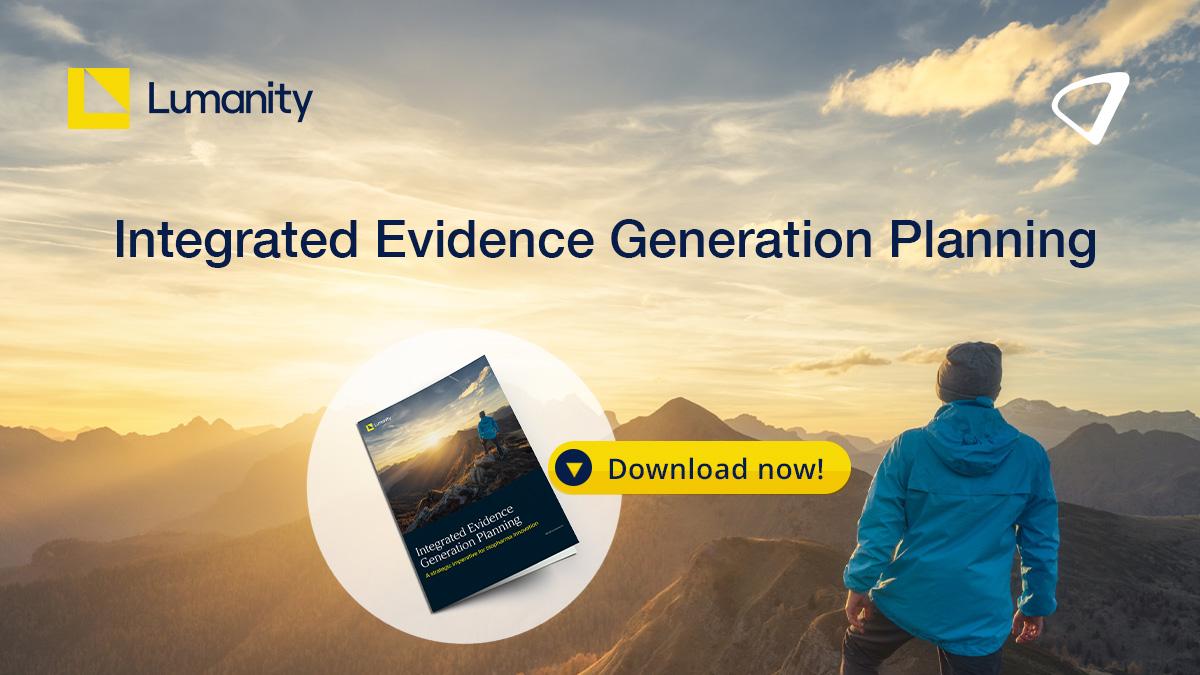Real-world evidence in CNS research: Past, present, future

Large-scale, multi-country real-world evidence (RWE) studies—including in Central Nervous System (CNS) indications—have the potential to deliver critical new insights. Many sponsors, however, remain cautious about the potential for success of these complex initiatives.
The good news is that patient-centric, large-scale real-world studies, which use data collected outside the system of controlled clinical trials, can and have already been delivered successfully. The tools, systems, and processes are available today, and modern technology has made it much easier to successfully run a real-world CNS study.
Individual contributions lead to important collective advances
CNS studies using RWE can generate a robust data set from a group of people who want to participate in research and contribute their data to help make a difference in improving treatment options for patients like themselves. Where patients have been engaged throughout an RWE study, there are additional downstream opportunities. For example, by continuing the engagement, today’s RWE participant could become tomorrow’s randomised controlled clinical trial participant.
We’re seeing growing evidence of patients embracing RWE studies. For instance, Apple conducted a number of studies using ResearchKit, which has helped 100,000 people normalise taking part in real-world studies by capturing their data on iPhones.
An early example of collecting RWE directly from CNS patients was the “100 for Parkinson's” study, which pre-dated the COVID-19 pandemic. Over 4,500 patients signed up virtually and were guided through a study landing page and eConsent process. Patients tracked more than 2.2 million data points and 1.3 million symptom scores and donated their data—patient-reported outcomes (PROs), wearable device data, and symptom data—to a research dataset overseen by a data access committee at the Cure Parkinson’s Trust. Published research included an analysis of data from EuroQol’s EQ-5D-5L Quality of Life measurement based on people with Parkinson’s Disease. Overall, the study built a rich data set, and a strong foundation for further use of RWE in CNS research.
The patient-led, global OurBrainBank community is another example of the power of getting patients—in this case, individuals diagnosed with glioblastoma—more involved in capturing data and putting them at the centRE of real-world studies. The group’s founder, Jessica Morris, was a patient with glioblastoma. She worked with Columbia University and the Dana Farber Cancer Center to launch a study in 2018, in which 630 patients captured over 150,000 data points to create a viable and scalable foundation for future research and discovery.
Pre- and post-pandemic, we've seen greater focus on real-world groups and real-world studies. Coverage is expanding in publications, and industry groups – including the Drug Information Association (DIA) – are sponsoring conferences dedicated specifically to RWE.
Even with growing momentum, there are still misconceptions about the use and role of RWE. For example, as noted in a recent article by Manfred Stapff, MD, PhD, “unlike data from controlled clinical trials, RWE is collected from routine healthcare settings—data that was initially not meant for research and […] inherently incomplete. While in a controlled clinical trial, the data collection is usually very close to 100%, the real world looks very different.”
Further discussion and education will be critical to building an understanding that RWE should not replace data gathered in clinical trials, but should augment and add further and context.
Looking forward
In general, many RWE studies are based on retrospective chart reviews and looking at past claims data. Today, as we learn from and build on examples of RWE studies and approaches, there is significant opportunity for more prospective real-world data to be captured. However, given notoriously challenging compliance rates, this requires well-developed patient data capture technology to help engage and retain patients.
The combination of clinical trials and real-world studies can open the door to new possibilities. It offers the potential to collect RWE data to prove concepts, innovate, and test new approaches—and then bring that innovation back into clinical trials with proven data points.
While real-world studies present exciting opportunities, they must be viewed as part of a coordinated research programme, alongside clinical trials.
At a recent CNS-focused conference, I participated in a lively panel discussion about this topic, underscoring that clinical trials will remain the gold standard. This is particularly important for drugs and therapies not yet on the market because of obvious safety and efficacy concerns. Further, because of the lack of structure, consistency, and noisy nature of the data, RWE cannot replace other, more robust techniques. Sponsors will always need the right research plan with the right quality of data to meet their objectives.
Building on the theme of the real-world being a driver of innovation, it is exciting to consider how RWE data can be combined with medical records and claims data via tokenisation approaches. Tokenisation allows for anonymous linking of data, meaning that research datasets can be even more powerful when combined with our data sources. Further, other information sources, including data from wearable devices and cognitive tests, can augment a prospective dataset. For example, the Montreal Cognitive Assessment’s (MoCA) XpressO digital test is an easy self-guided assessment taken by over 50,000 people. The XpressO results are indicative of the gold-standard MoCA assessment, meaning the new app could be used in as an early-stage test for mild cognitive decline for Alzheimer's and dementia studies. This new approach, alongside the clinic-based MoCA, offers new ways to capture far larger volumes and frequencies of data, which is ideal in a real-world setting.
No discussion of innovation can fail to consider AI and its potential. AI is likely to bring numerous benefits. However, for clinical trials and real-world studies its application must be carefully and cautiously considered. AI could make it easier to create the first draft of a protocol, and it is already being used to accelerate development of final regulatory submission documents. I personally see great potential to use AI in understanding a person and their patterns, allowing clinical trial sponsors and implementors to optimise each person's trial journey without affecting the quality of the data.
Over the next 18 months to two years, we are very likely to see continued growth in the use of RWE in CNS studies. More sponsors are paying attention to RWE, and the industry is collecting data sets of increasing size and quality. As technology continues to become easier and more effective to deploy at pace and scale, we need to continue to keep a keen focus on the most important aspect of the study. It’s not just focusing on the data, nor the analysis, and certainly not the technology. The focus must be on ensuring that the study is designed collaboratively with patients and on delivering a patient-centric experience that helps to maintain engagement, promote retention, and support high data capture compliance.
About the author
 As uMotif’s chief patient officer and co-founder, Bruce Hellman guides the continued evolution of uMotif’s modern eCOA/ePRO and eConsent platform, putting patients and sites at the heart of clinical trials and real-world studies. Enthusiastic about sharing his vision for expanding the industry’s focus on patients and sites in clinical trial development and technology, Hellman is regularly invited to address industry conferences, and he is an active participant in academic research and working groups.
As uMotif’s chief patient officer and co-founder, Bruce Hellman guides the continued evolution of uMotif’s modern eCOA/ePRO and eConsent platform, putting patients and sites at the heart of clinical trials and real-world studies. Enthusiastic about sharing his vision for expanding the industry’s focus on patients and sites in clinical trial development and technology, Hellman is regularly invited to address industry conferences, and he is an active participant in academic research and working groups.












